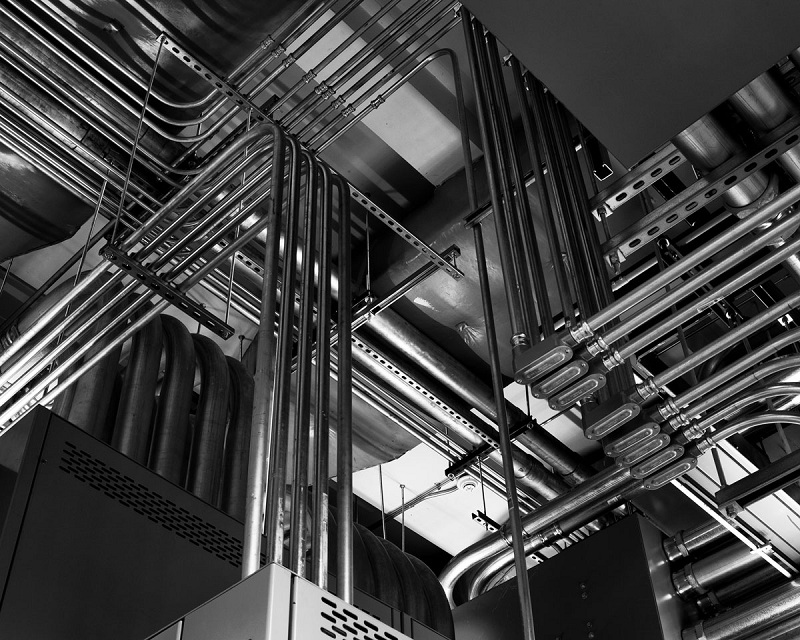
Austenitic stainless steel has good corrosion resistance, high temperature oxidation resistance, good low temperature performance and excellent mechanical and plus r energy. Therefore, it is widely used in chemical, petroleum, power, nuclear engineering, aerospace, Marine, medicine, light industry, textile and other sectors. Its main purpose is to prevent corrosion and rust. The corrosion resistance of stainless steel mainly depends on the surface passivation film, if the film is incomplete or defective, stainless steel will still be corroded. Engineering is usually pickling passivation treatment, so that the corrosion resistance potential of stainless steel play a greater role. In the process of forming, assembling, welding, weld inspection (such as flaw detection, pressure test) and construction marking, stainless steel equipment and components bring surface oil, rust, non-metallic dirt, low melting point metal pollutants, paint, welding slag and splash, etc. These substances affect the surface quality of stainless steel equipment and components, and destroy the oxide film on the surface. It reduces the overall corrosion resistance and local corrosion resistance of the steel (including pitting corrosion, crevice corrosion), and even leads to stress corrosion cracking.
Stainless steel surface cleaning, pickling and passivation, in addition to maximizing corrosion resistance, but also to prevent product pollution and obtain aesthetic effects. In the GBl50-1998 "Steel pressure vessel", the surface of the container made of stainless steel and composite steel plate with anti-corrosion requirements should be pickled and passivated. This provision is for pressure vessels used in the petrochemical industry, because these devices are used in direct contact with corrosive media occasions, in order to ensure corrosion resistance, the pickling passivation is necessary. For other industrial sectors, if not for anti-corrosion purposes, only based on cleaning and aesthetic requirements, and the use of stainless steel judgment will not need pickling passivation. However, the weld of stainless steel equipment also needs to be pickled and passivated. For nuclear engineering, some chemical equipment and other use requirements, in addition to pickling passivation, but also the use of high purity media for final fine cleaning or mechanical, chemical and electrolytic polishing and other finishing treatment.

The corrosion resistance of stainless steel is mainly due to the surface covered with an extremely thin layer of dense passivation film, which corrodes the medium and is the basic barrier of stainless steel protection. Stainless steel passivation has dynamic characteristics and should not be regarded as a complete stop of corrosion, but the formation of a diffusion barrier layer, so that the anode reaction speed is greatly reduced. Usually in the presence of reducing agents (such as chloride ions) tend to destroy the film, while in the presence of oxidizing agents (such as air) can maintain or repair the film.
Stainless steel workpiece placed in the air will form an oxide film, but the protection of this film is not perfect. It is usually necessary to thoroughly clean, including alkali washing and pickling, and then passivation with oxidizer, in order to ensure the integrity and stability of the passivation film. One of the purposes of pickling is to create favorable conditions for passivation treatment and ensure the formation of high-quality passivation film. Because a layer of surface is corroded off the surface of stainless steel through pickling, the chemical activity of the acid makes the dissolution rate of the defect part higher than that of other parts on the surface, so pickling can make the entire surface tend to be uniform and balanced, and some of the original hidden dangers that are easy to cause corrosion are removed. But more importantly, through pickling passivation, the oxides of iron and iron are preferably dissolved than those of chromium and chromium, removing the chrome-poor layer, resulting in chromium enrichment on the surface of stainless steel, and the potential of this chrome-rich passivation film can reach +1.0V(SCE), close to the potential of precious metals, improving the stability of corrosion resistance. Different passivation treatment will also affect the composition and structure of the film, thus affecting the rust, such as through electrochemical modification treatment, can make the passivation film has a multi-layer structure, the formation of CrO3 or Cr2O3 in the barrier layer, or the formation of a glassy oxide film, so that the stainless steel can play the greatest corrosion resistance.
Discussion on grounding reasons of Transformer Iron Core
2023-08-23Process characteristics of 304 stainless steel sheet
2020-12-28Electrical steel enables new propulsion systems to enable future aviation development
2024-04-03How to solve the problem of cracking of high strength steel sheet in cold stamping process?
2023-11-09Cause of edge crack of cold rolled electrical steel and improvement measures
2024-01-03Hot rolled, cold rolled coils, silicon steel, steel coils where did they go
2023-10-24






